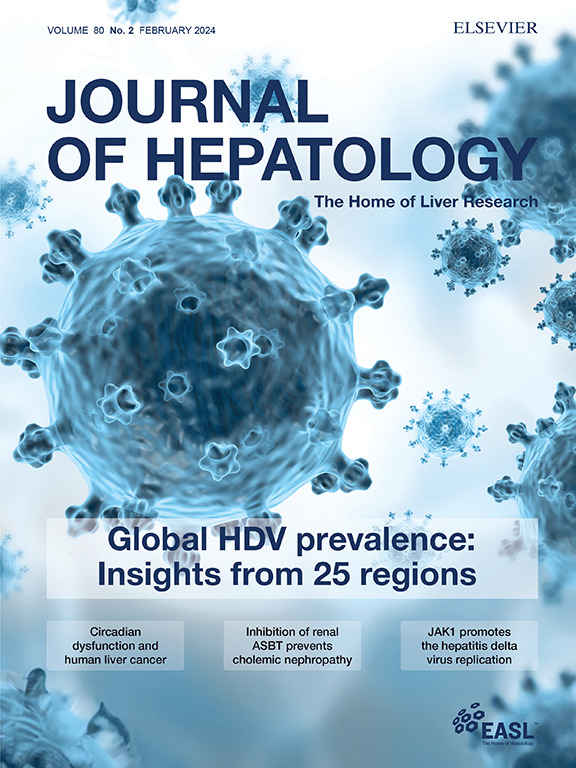根据临床适应症调整tips后的血流动力学目标:静脉曲张出血vs.难治性腹水
IF 26.8
1区 医学
Q1 GASTROENTEROLOGY & HEPATOLOGY
引用次数: 0
摘要
第二次测量时对PPG的调整zipprich等人注意到,在我们的队列中,对门静脉压力梯度(PPG)的调整仅限于次优支架定位或狭窄/闭塞的病例,而不是PPG超过目标范围的病例。这种方法符合我们研究的主要目的:确定tips后PPG测量的最佳时间和血流动力学目标,而不是评估干预效果[1]。为了保持PPG进化的自然轨迹并避免混淆效应,我们故意在7-14 mmHg目标范围内的结果差异。ipprich等人报告在他们的队列中(n=84)使用7-14 mmHg目标范围没有生存或失代偿差异,与我们的研究结果形成对比。两个因素可能解释这种差异:a)人群异质性:我们的队列只包括静脉曲张出血的患者,而Zipprich等人纳入了混合人群(71%难治性腹水)。这些组表现出不同的血流动力学特征。对于出血,过量PPG降低(<10 mmHg)有肝性脑病(OHE)风险作者贡献吕勇、王正宇、罗伯涵、韩国红设计了这封信;永律起草了这封信;韩国红修改了这封信。金融supportNone。竞争利益声明所有作者都没有什么要声明的。详情请参阅随附的ICMJE披露表。本文章由计算机程序翻译,如有差异,请以英文原文为准。
Tailoring Post-TIPS Hemodynamic Targets to Clinical Indications: Variceal Bleeding vs. Refractory Ascites
Section snippets
Adjustments to PPG During the Second Measurement
Zipprich et al. note that adjustments to the portal pressure gradient (PPG) in our cohort were limited to cases of suboptimal stent positioning or stenosis/occlusion, rather than PPG exceeding the target range. This approach aligns with the primary objective of our study: to identify optimal timing and hemodynamic targets for PPG measurement post-TIPS, not to evaluate intervention efficacy[1]. To preserve the natural trajectory of PPG evolution and avoid confounding effects, we deliberatelyDiscrepancy in Outcomes with the 7–14 mmHg Target Range
Zipprich et al. report no survival or decompensation differences using a 7–14 mmHg target in their cohort (n=84), contrasting with our findings. Two factors likely explain this divergence: a) Population Heterogeneity: Our cohort exclusively included patients with variceal bleeding, whereas Zipprich et al. enrolled a mixed population (71% refractory ascites). These groups exhibit distinct hemodynamic profiles. For bleeding, excessive PPG reduction (<10 mmHg) risks hepatic encephalopathy (OHE)Authors' contributions
Yong Lv, Zhengyu Wang, Bohan Luo and Guohong Han designed the letter; Yong Lv drafted the letter; Guohong Han revised the letter.Financial support
None.Declaration of Competing Interest
All authors have nothing to declare.Please refer to the accompanying ICMJE disclosure forms for further details.Acknowledgements
None.求助全文
通过发布文献求助,成功后即可免费获取论文全文。
去求助
来源期刊

Journal of Hepatology
医学-胃肠肝病学
CiteScore
46.10
自引率
4.30%
发文量
2325
审稿时长
30 days
期刊介绍:
The Journal of Hepatology is the official publication of the European Association for the Study of the Liver (EASL). It is dedicated to presenting clinical and basic research in the field of hepatology through original papers, reviews, case reports, and letters to the Editor. The Journal is published in English and may consider supplements that pass an editorial review.
 求助内容:
求助内容: 应助结果提醒方式:
应助结果提醒方式:


